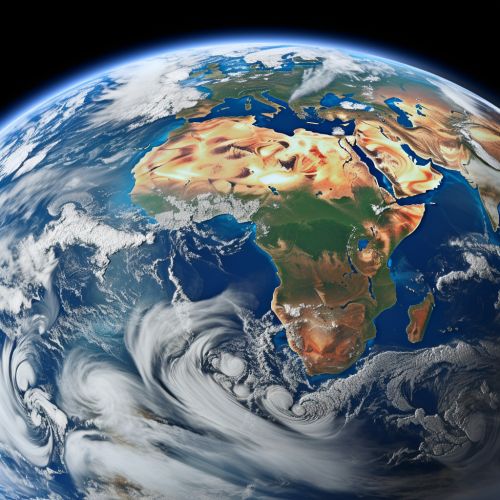Global weather patterns
Introduction
Global weather patterns are the result of complex interactions between various components of the Earth's climate system, including the atmosphere, oceans, land surface, and ice. These patterns are influenced by a variety of factors, including solar radiation, the Earth's rotation, and the distribution of land and water on the Earth's surface.

Atmospheric Circulation
The Earth's atmospheric circulation plays a crucial role in shaping global weather patterns. The movement of air in the atmosphere is driven by the uneven heating of the Earth's surface by the sun. This results in a series of circulation cells, known as the Hadley, Ferrel, and Polar cells, which transport heat from the equator towards the poles.
Oceanic Circulation
Oceanic circulation also plays a significant role in global weather patterns. The movement of water in the world's oceans is driven by differences in temperature and salinity, a process known as thermohaline circulation. This results in a global conveyor belt of ocean currents, which helps to distribute heat around the planet and influence weather patterns.
Jet Streams
Jet streams are fast flowing, narrow air currents found in the atmosphere of some planets, including Earth. They have a significant impact on global weather patterns by influencing the movement of weather systems. There are typically two main jet streams in each hemisphere, the polar jet and the subtropical jet, both of which play a crucial role in the formation and movement of weather systems.
El Niño and La Niña
El Niño and La Niña are significant drivers of global weather patterns. These phenomena represent fluctuations in temperature between the ocean and atmosphere in the east-central Equatorial Pacific. El Niño events are associated with warmer than average sea surface temperatures, while La Niña events are associated with cooler than average sea surface temperatures. These temperature variations can have significant impacts on global weather patterns, influencing precipitation and temperature patterns around the world.
Climate Change and Weather Patterns
Climate change is having a profound impact on global weather patterns. Rising global temperatures, largely driven by human activities, are causing shifts in weather patterns and increasing the frequency and intensity of extreme weather events. This includes more intense heatwaves, heavier rainfall events, and more severe droughts.
